It's My Birthday, James B. & I Posted Some Pics!
Wed Dec 28, 2011 7:13 pm
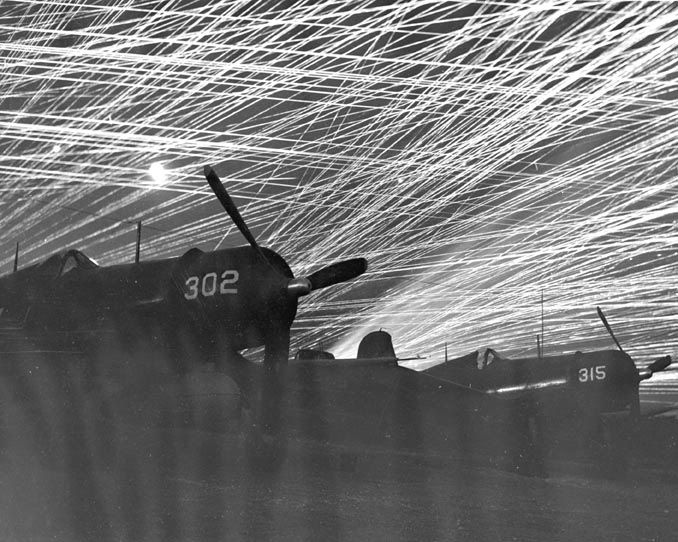
Corsairs of VMF-311 are silhouetted against the sky by a lacework of Marine Corps antiaircraft fire during a 16 April 1945 Japanese air raid on Yontan Airfield on Okinawa.

U.S. Navy Vought F4U-4 Corsair aircraft of fighter squadron VF-874, Carrier Air Group 102 (CVG-102), lining up to take off on the deck of the aircraft carrier USS Oriskany (CV-34) off Southern California (USA), on 15 August 1952.
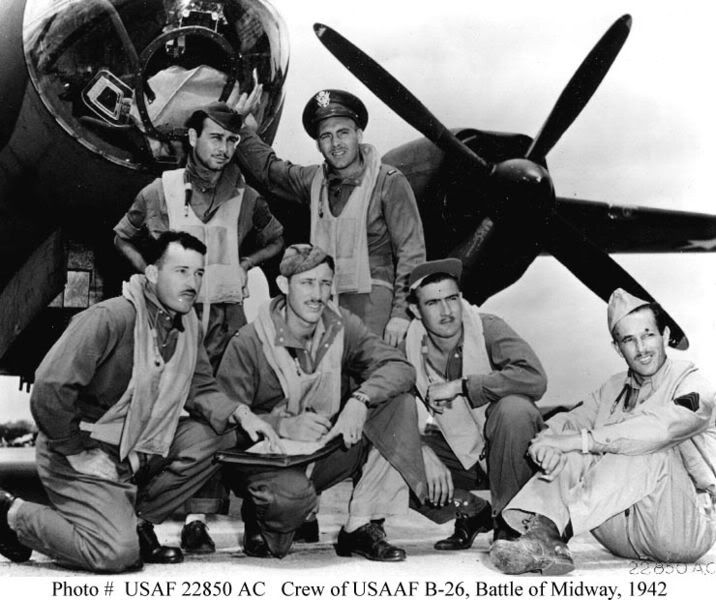
First Lieutenant James Muri's aircrew and its USAAF B-26A which made torpedo-attack on Nagumo's carriers in early morning June 4 during the Battle of Midway, June 1942. 1st. Lt. Muri is second from left, in the front row.
Got Some More---------------------
My buddy James Beam hit "SUBMIT" before I was ready too

A Consolidated PB2Y-5R Coronado at the Naval Air Station Jacksonville, Florida (USA), in 1943. Two Consolidated PBY Catalinas are visible in the background.
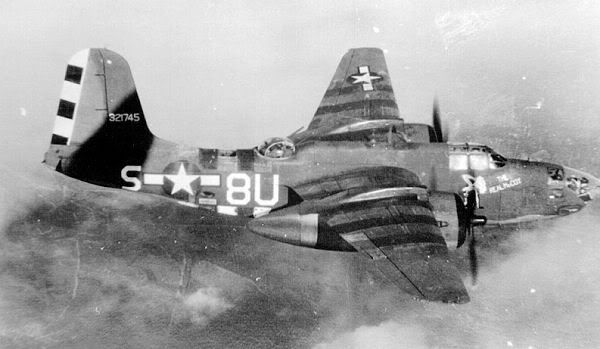
Douglas A-20s of the 410th Bomb Group, RAF Gosfield, England.
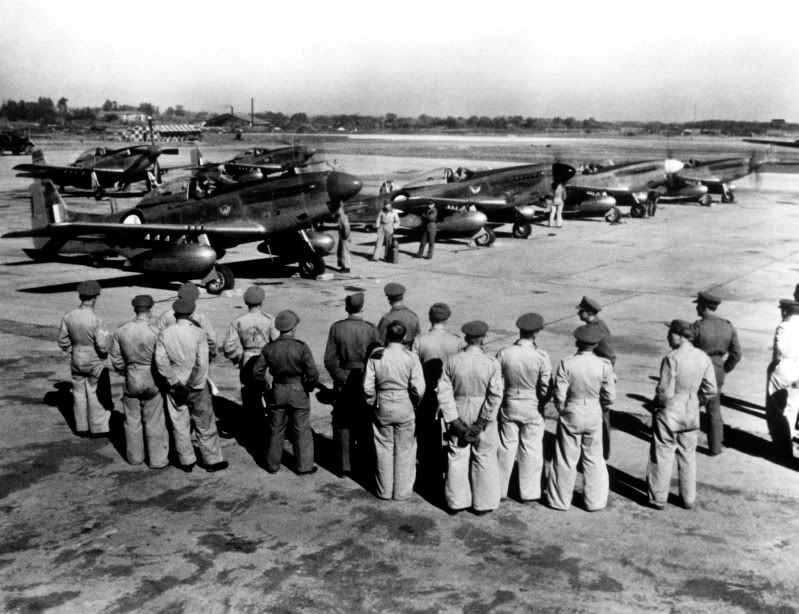
Four North American F-51D Mustang fighters of No. 2 Flying Cheetah squadron of the South African Air Force warm up before take-off on their first combat mission in Korea on 16 November 1950. No. 2 Sqn. SAAF was first attached to the 6002nd Tactical Support Wing of the U.S. Far East Forces, later to the 18th Fighter-Bomber Group.
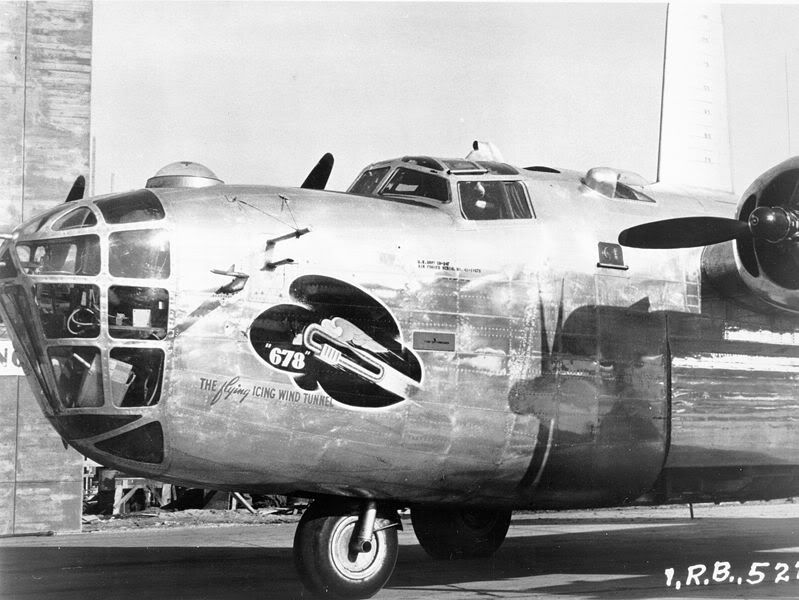
A Consolidated B-24 Liberator was modified for studies on the effects of inflight icing on all aerosurfaces such as the wings, tail, engine cowling, nose, props, and antenna. The aircraft operated from the NACA Lewis Research Center in Cleveland, Ohio. 1961.
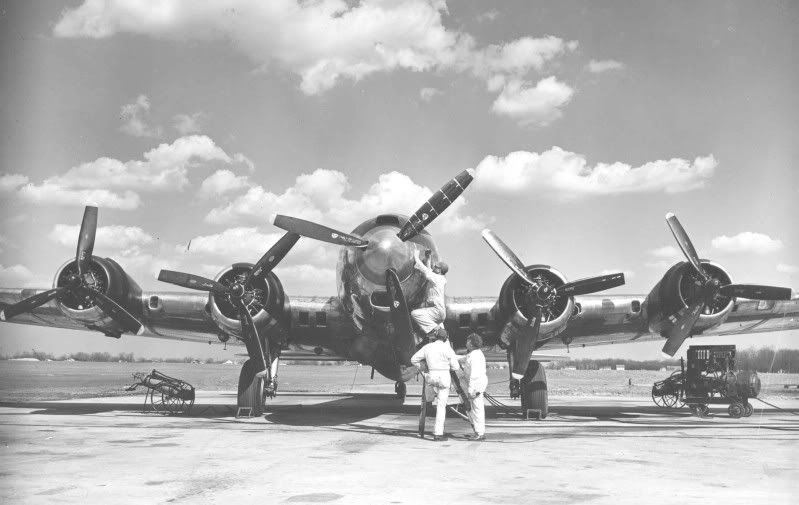
The most unusual conversions were three B-17Gs converted to engine test beds. The nose section was removed and replaced with a strengthened mount for a fifth engine. The Pratt & Whitney XT-34, Wright XT-35, Wright R-3350 and Allison T-56 engines were all flight tested on JB-17Gs.
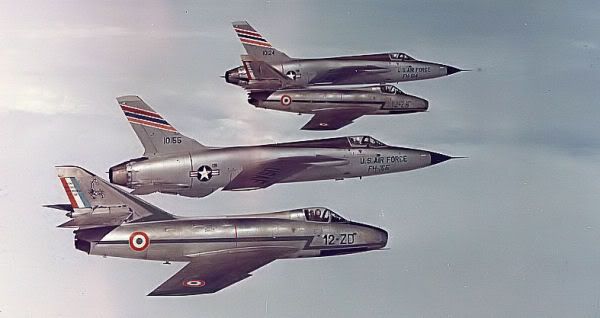
Two French Dassault Super Mystère B.2 fighters fly in formation with two U.S. Air Force Republic F-105D Thunderchief aircraft, in 1964. The Super Mystères belonged to the Escadron de chasse 1/12 Cambrésis based at Cambrai air base (BA 103), departement Nord, France. The F-105Ds (s/n 61-0155, 61-0124) were from the 22nd Tactical Fighter Squadron, 36th Tactical Fighter Wing, based at Bitburg air base, Germany. The F-105D 61-0124 was later in service with the 469th TFS, 388th TFW, at Korat Royal Thai Air Force Base. It was shot down over North Vietnam on 20 November 1967 by a Mikoyan Gurevich MiG-21 with an Atoll air-to-air missile. The pilot became a Prisoner of War.
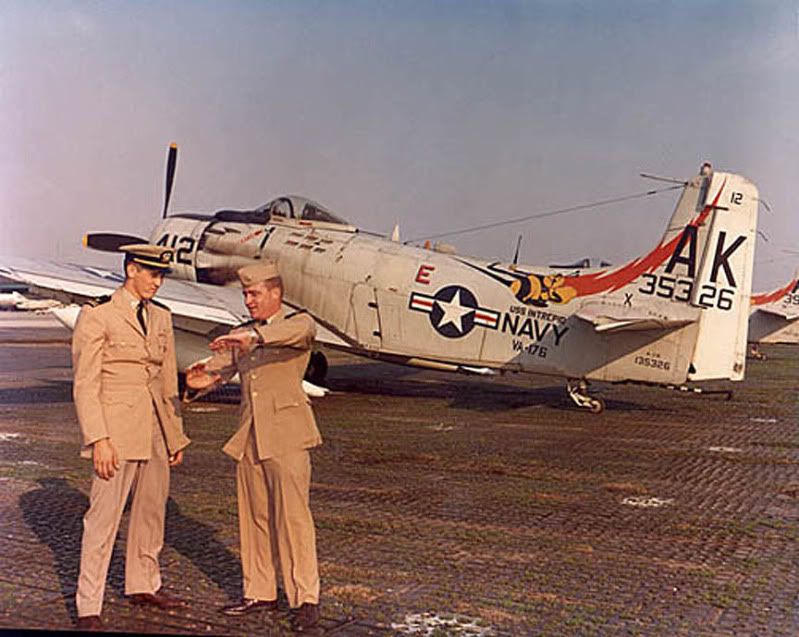
On the 9 October 1966, Lt.(jg) William T. Patton of VA-176 shot down a North Vietnamese MiG-17 near Hanoi flying the Douglas A-1H Skyraider (BuNo. 137543). The kill was observed by his section leader, Lt. Peter Russell. Patton on the left, explains to Russell how he maneuvered during the MiG engagement. Patton was assigned to attack squadron VA-176 Thunderbolts of Attack Carrier Air Wing Ten (CVW-10) aboard the aircraft carrier USS Intrepid (CVS-11). LCDR Leo Cook and his wingman LTJG Wiley were the lead section of Skyraiders to locate and hopefully rescue a downed US pilot in North Vietnam. While maneuvering at low altitude between ridges and cloud layers, they were jumped two sections of MiG-17s. Calling out the attack on their common radio frequency, Cook and Wiley maouvered against the MiGs. Russell and Patton soon arrived in the area and immediately gained a position of advantage on the MiGs and Patton could shoot one down. A-1H BuNo. 135326 is in the background. Date 1966.
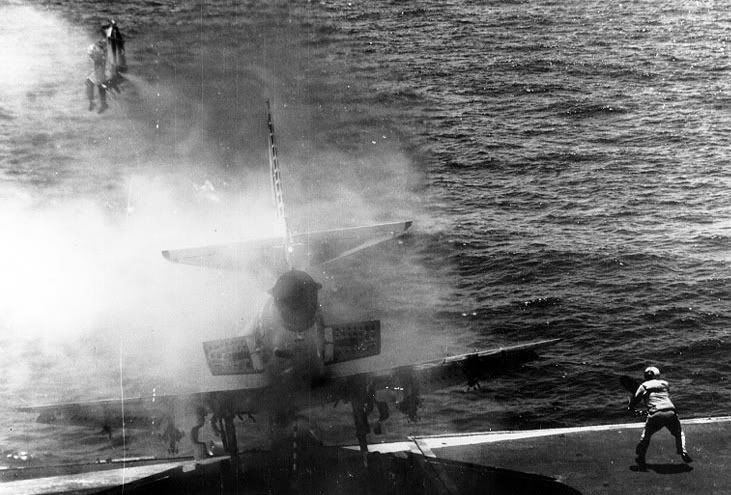
Lieutenant (Junior Grade) William Belden ejects from his Douglas A-4E Skyhawk attack aircraft (Bureau # 150117) as it rolls into the USS Shangri-La port catwalk after suffering a brake failure following recovery, 2 July 1970. Lt. JG Belden ejected safely and was rescued by Shangri-La's helicopter. The A-4E was assigned to attack squadron VA-152 Wild Aces, Attack Carrier Air Wing Eight (CVW-8), tail code "AJ-505".
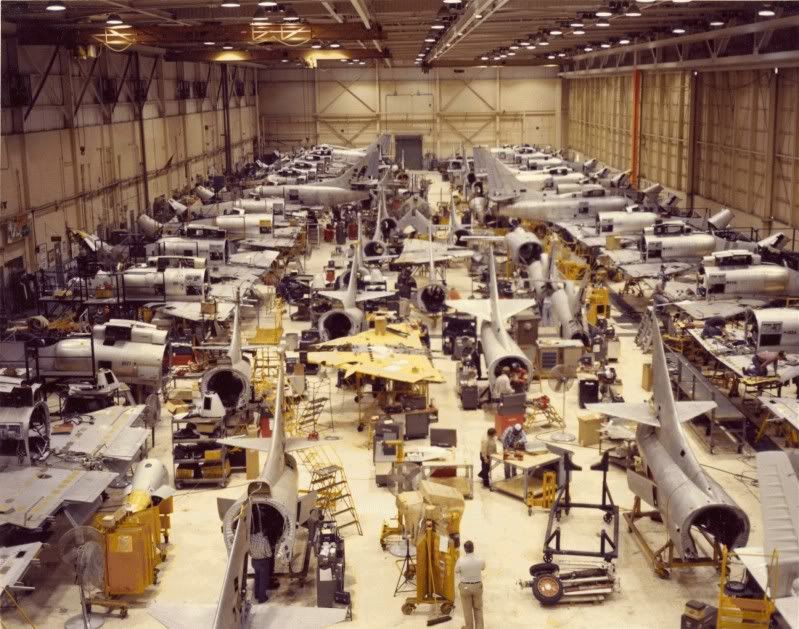
U.S. Navy Douglas A-4 Skyhawks in various stages of rework crowd a hangar at the Naval Air Rework Facility at the Naval Air Station Pensacola, Florida (USA), circa 1980.
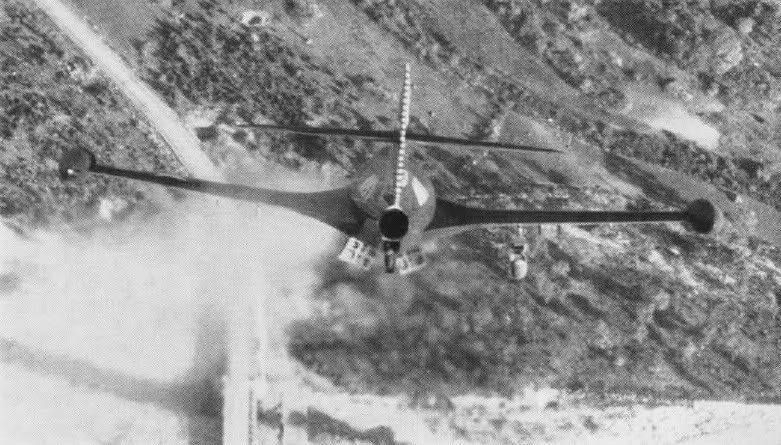
The second of two photographs showing the bombing of a bridge during the Korean War. A Grumman F9F-2 Panther of fighter squadron VF-71, piloted by Lt. R. P. Yeatman, has fired the HVAR rockets under the wings (hence the smoke) and already dropped the left 113 kg (250 lb) bomb. The bomb under the right wing is just coming off. VF-71 was assigned to Carrier Air Group Seven (CVG-7) aboard the U.S. aircraft carrier USS Bon Homme Richard (CVA-31), which was deployed to Korea from 20 May 1952 to 8 January 1953. VF-71 had the tail code "L-1XX" during that deployment.
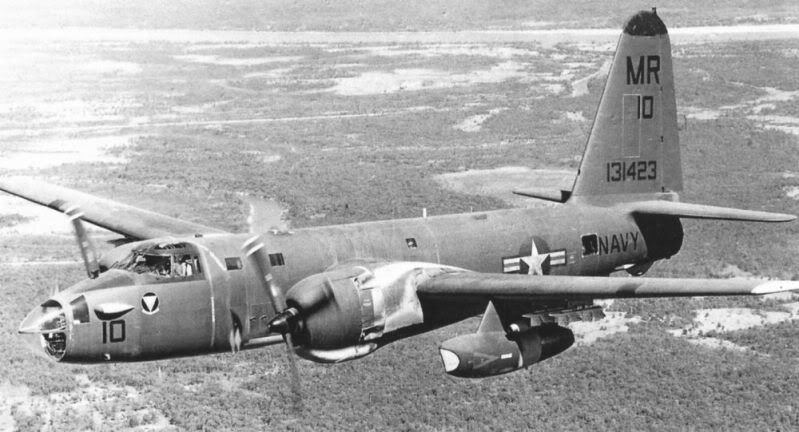
A U.S. Navy Lockheed OP-2E Neptune (BuNo. 131423) of observation squadron VO-67 on a mission over Laos in 1967/68. VO-67 was employed during the "Igloo White" programme to drop sensors along the "Ho Chi Minh Trail" to detect movements of enemy troops during the Vietnam War.
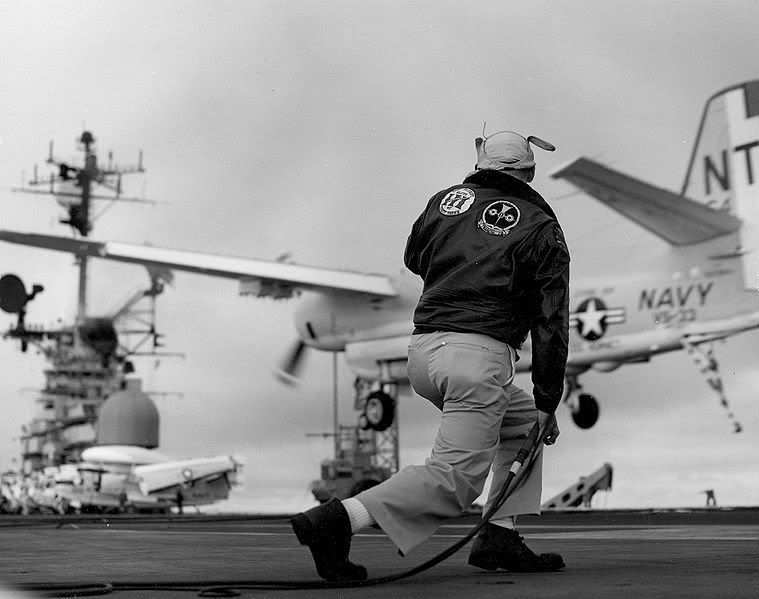
A U.S. Navy Grumman S-2E Tracker of antisubmarine squadron VS-33 Screwbirds, Carrier Anti-Submarine Air Group 59 (CVSG-59), passes by a Landing Signal Officer (LSO) on its way to trapping on board the aircraft carrier USS Hornet (CVS-12), in 1970.

A Cessna O-2 aircraft from the 24th Consolidated Aircraft Maintenance Squadron arrives at the base to participate in the joint US and Ecuadorian Exercise BLUE HORIZON. July 1985.
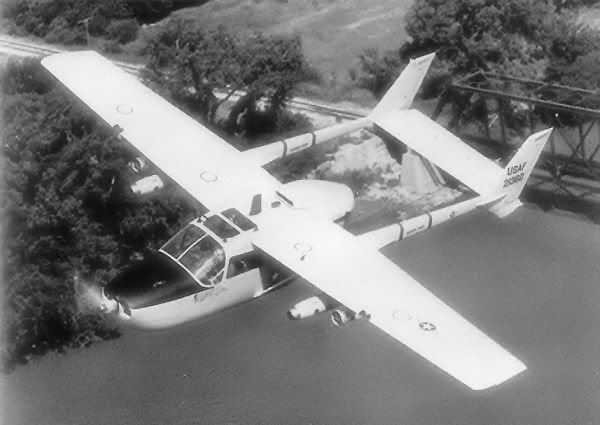
Cessna 02-A Bird Dog of the 21st Tactical Air Support Squadron - Pleiku Air Base, South Vietnam 1968/69.

A U.S. Air National Guard Republic F-105G Thunderchief Wild Weasel aircraft, carrying two practice 227 kg (500 lb) Mark 82 bombs, in flight during exercise "Gangbuster XI" at Dobbins Air Force Base, Georgia (USA), on 10 April 1981. The aircraft was assigned to the 128th Tactical Fighter Squadron, 116th Tactical Fighter Wing, Georgia Air National Guard. Date Shot: 10 Apr 1981.
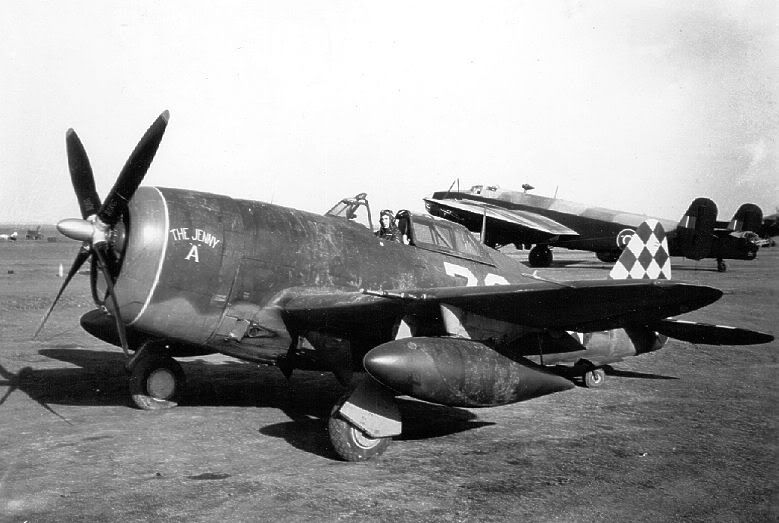
P-47 of the 325th Fighter Group Date 1943. England.
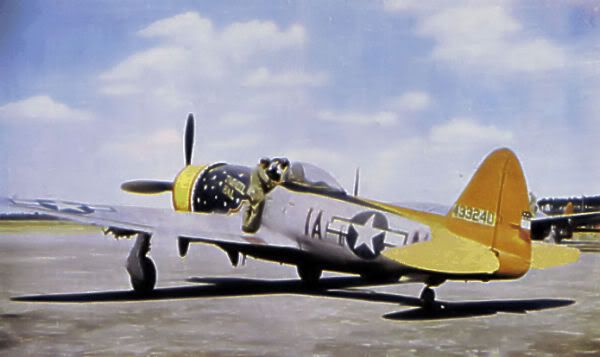
P-47D Serial No. 44-33240 of the 358th Fighter Group, Toul Air Base France, January 1945.
Gotta Have A Spad------------
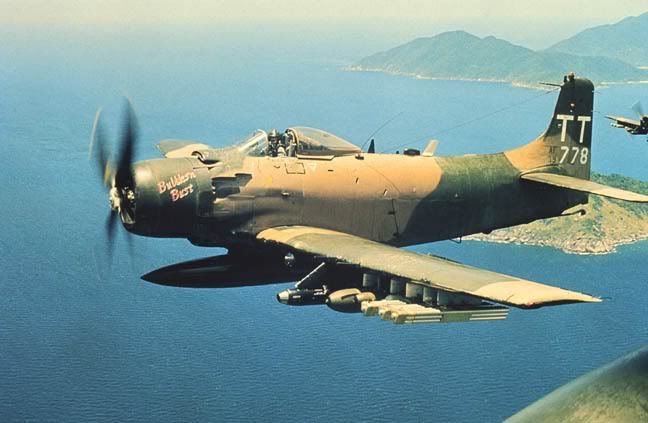
A Douglas A-1H Skyraider (s/n 52-139778) of the 602nd Special Operations Squadron over Vietnam in June 1970.
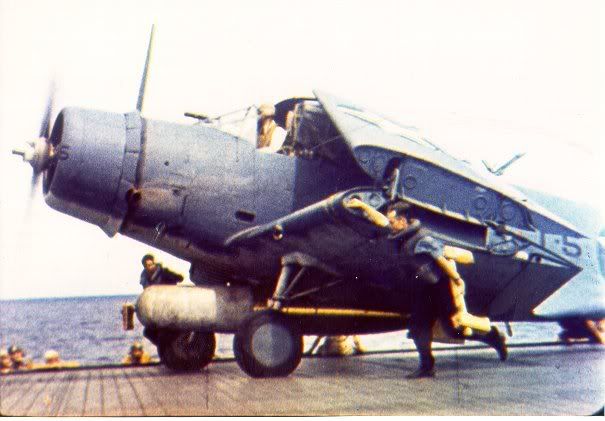
A Douglas TBD-1 Devastator (BuNo 0308) from U.S. torpedo squadron VT-8, No. T-5, taxiing up the flight deck of the aircraft carrier USS Hornet (CV-8), circa 15 May 1942. This aircraft has already been equipped with twin .30 cal rear mount and is carrying a live torpedo. It was lost on 4 June 1942 with its crew LT(jg) Jeff Davis Woodson and Otway David Creasy, Jr., ARM2c. Date 15 May 1942.
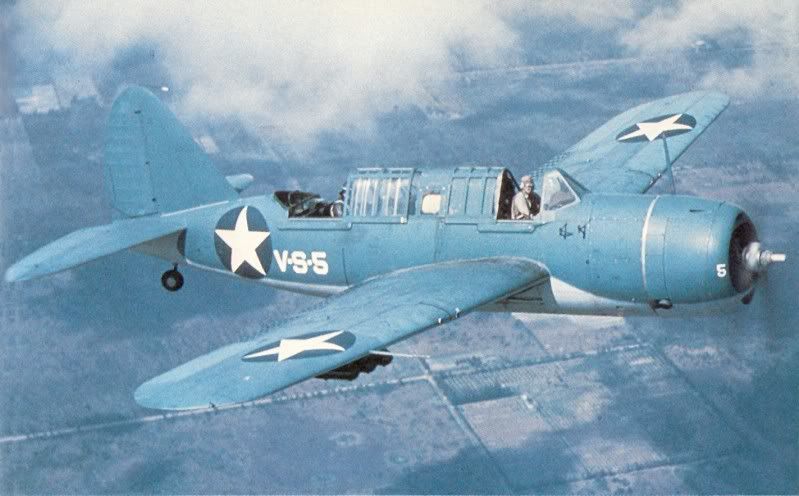
A U.S. Navy Brewster SB2A-4 Buccaneer in flight near Vero Beach, Florida (USA), in 1942/43.
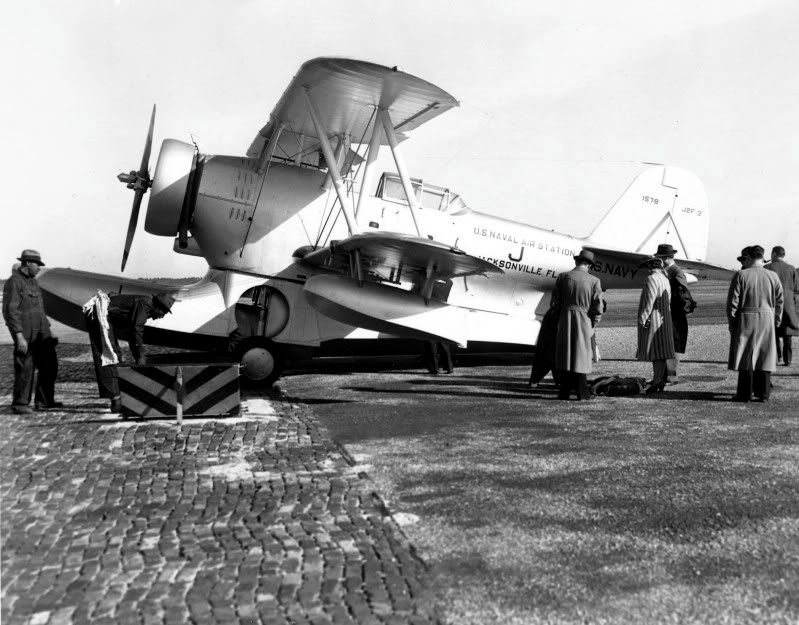
The first aircraft assigned to Naval Air Station Jacksonville, Florida (USA), was this Grumman J2F-3 Duck (BuNo 1578), which arrived on 16 January 1940. This aircraft would remain as the Commanding Officer's plane.
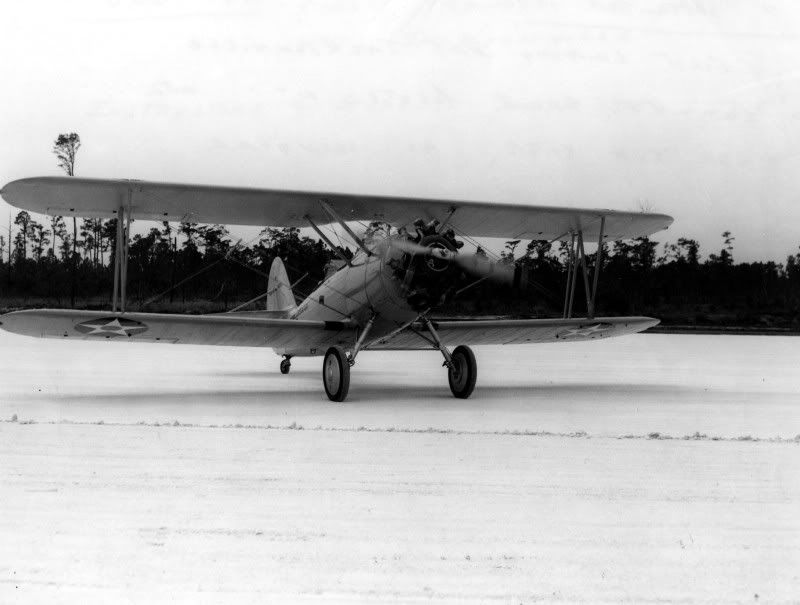
This U.S. Navy Naval Aircraft Factory N3N-3 Canary was the first aircraft landing at the Naval Air Station Jacksonville, Florida (USA), on 7 September 1940.

A Martin AM-1 Mauler of attack squadron VA-174 taking off from the aircraft carrier USS Kearsarge (CV-33) during carrier qualifications in 1949. The tests took place in the Atlantic Ocean off Naval Air Station Quonset Point, Rhode Island (USA)

U.S. Army Air Corps Curtiss P-36C Hawk fighters of the 27th Pursuit Squadron, 1st Pursuit Group, at Wright Field, Ohio (USA), in 1939. The P-36s were camouflaged just for public relations for the U.S. National Air Races in a paint scheme that was never used by the USAAC.
That's about it this time--------------- You All "Party On, & Be Excellent"! HAPPY NEW YEAR!!!!!!!!!!!
Last edited by Robbie Stuart on Wed Dec 28, 2011 8:38 pm, edited 2 times in total.
Re: It'sBirthday, & Can Posy Some Pics, If I Want Too!
Wed Dec 28, 2011 7:22 pm
Happy Birthday !!!!!!!!!  and the pictures are great too
and the pictures are great too 
 and the pictures are great too
and the pictures are great too Re: It's My Birthday, & Can Post Some Pics, If I Want To!
Wed Dec 28, 2011 8:41 pm
A Consolidated B-24 Liberator was modified for studies on the effects of inflight icing on all aerosurfaces such as the wings, tail, engine cowling, nose, props, and antenna. The aircraft operated from the NACA Lewis Research Center in Cleveland, Ohio. 1961.
1961? Is that correct? I thought the last B-24 in service (also used for icing research) was 44-51228 which was retired in '54.
Re: It's My Birthday, & Can Post Some Pics, If I Want To!
Wed Dec 28, 2011 8:52 pm
Chris Brame wrote:A Consolidated B-24 Liberator was modified for studies on the effects of inflight icing on all aerosurfaces such as the wings, tail, engine cowling, nose, props, and antenna. The aircraft operated from the NACA Lewis Research Center in Cleveland, Ohio. 1961.
1961? Is that correct? I thought the last B-24 in service (also used for icing research) was 44-51228 which was retired in '54.
Ya Know, that just might be an mistake. Sorry
Re: It's My Birthday, James B. & I Posted Some Pics!
Thu Dec 29, 2011 12:03 am
looks like you gave me a present as i've never seen any of these pics!! happy healthy birthday & new year to you!!